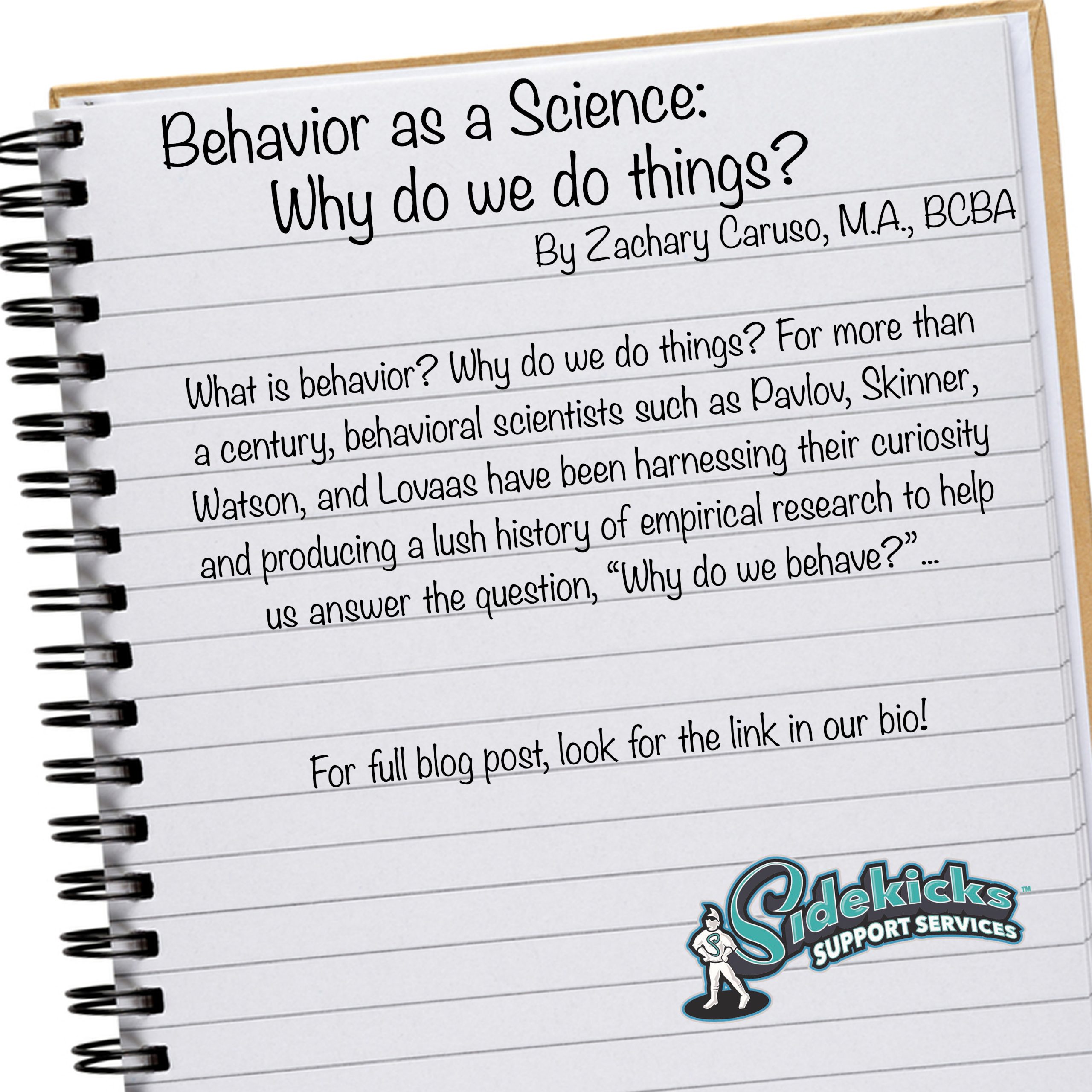What is behavior? Why do we do things? For more than a century, behavioral scientists such as Pavlov, Skinner, Watson, and Lovaas have been harnessing their curiosity and producing a lush history of empirical research to help us answer the question, “Why do we behave?”
Applied Behavior Analysis (ABA) is a practical and scientific approach to behavior modification. In ABA, we rely heavily on data and research to inform our practice and to make meaningful change in the lives of the individuals we serve. The ultimate goal of ABA therapy is to develop critical life skills and to address any challenging or maladaptive behaviors that may interfere with an individual’s development of those skills.
So why do maladaptive behaviors occur? The real question is, “Why does behavior occur?” These two questions have the same answer. All behavior serves a functional purpose. In other words, all behavior happens for a reason. Whether we eat because we’re hungry, watch TV because it’s entertaining, or go to work so we can get paid, no one does anything without reason.
Individuals with communication impairments such as Autism Spectrum Disorder (ASD) can sometimes have a difficult time expressing their wants and needs or behaving in a functional way. When this occurs, they may begin to explore and learn less functional ways to communicate. This is how maladaptive behaviors develop.
In ABA, we seek to replace these maladaptive behaviors with more functional replacement behaviors. ABA is a complex science that is supported by years of evidence-based research. As we continue to learn and grow as practitioners, we strive to further advance our science, and by doing so, discover how to better support the individuals we work with in their pursuit of reaching their full potential.
By Zachary Caruso, M.A., BCBA


0 Comments